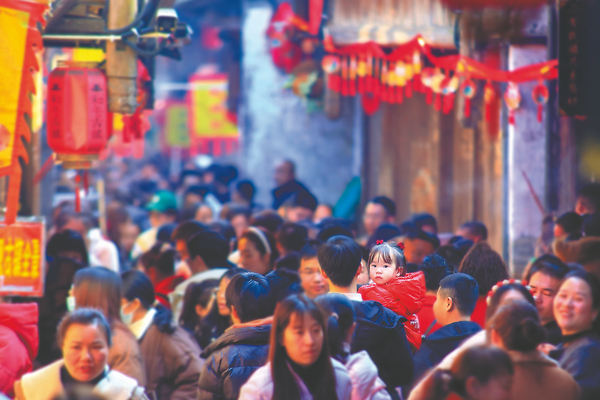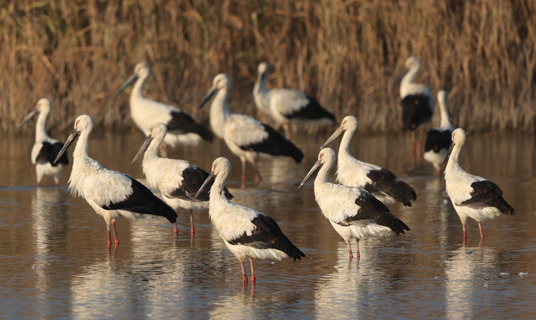'Dry boat' helps keep tradition afloat
 Tourists flock to Heping ancient town in Shaowu, Fujian province, on the first day of Spring Festival. HUANG ZHENMEI/FOR CHINA DAILY
Tourists flock to Heping ancient town in Shaowu, Fujian province, on the first day of Spring Festival. HUANG ZHENMEI/FOR CHINA DAILY
Although he has been retired for over 10 years, he has never missed the boat-making ritual and says he enjoys seeing the tradition celebrated.
When people ask him why he doesn't just take it easy, Xie will clench his fist as if to show his muscle. "As long as I can move my hands, I will keep the traditions of our ancestors," he says.
In downtown Shaowu, about 46 kilometers away, a series of celebratory cultural and folk art events helped liven up this year's Spring Festival.
He Mingling was particularly impressed by the dragon dances at the city's fountain plaza, a major public venue, on the first night of the Chinese New Year, where dragons of various colors and sizes danced to upbeat music on an open-air stage against the backdrop of crackling fireworks that lit up the night.
A large crowd of about 3,000 visitors laid siege to the space before the stage and were enthusiastic in their applause as each of the seven dragon dance teams finished.
"They all delivered high-level performances, considering that they had no prior experience," says He, who was in charge of arranging the show.
She says she was amazed by some of the stunts, such as the elaborate swaying of the dragon's body and the complex dance formations.
"Their enthusiasm and excitement were evident in their execution of every move and facial expressions," she says.
"The rain had only stopped a day before the first public performance, but all performers did very well, despite the ground still being wet."
The heads of some of the dragons weighed more than 15 kilograms, and other dragons were up to 75 meters in length.
"It was admirable. All the performers, from young people to retired women, were clearly trying to show their own style and contribute to the festive atmosphere,"He continues.
The 20 troupes were made up of civilians from across the city, and they took turns to perform for the public during the two-week festival before competing against one another for the top six prizes in an event that traditionally marks the end of Chinese New Year celebrations.
"Other performances, such as the Nuo dance to dispel ghosts and invite blessings, and the flower drum opera, were also put on," He says.
He works at the local folk customs and culture research center, which is part of the Shaowu culture, sports and tourism bureau. It was in charge of setting up the stage and organizing events, and so her Spring Festival was busier than normal this year, as she visited every nook and cranny in Shaowu to ensure that all the folk performances and celebrations went off smoothly.
Local authorities organized a 15-day celebration for the public this year, as opposed to seven days in previous years, says Tian Fang, deputy director of the Shaowu publicity department.
"We prepared a variety of events for each day, from art performances and riddle games to park parades,"Tian says.
The government encouraged enthusiasts to perform the dragon dance to welcome in the Year of the Dragon.
"The idea was to have them dance on main streets," Tian says, adding that staff from museums, educational institutions, youth league and retiree organizations were all responsive to the call to deliver performances.
"Some villages and towns have a tradition of dragon dance performances over the years, so they were able to put on good shows after just a few rehearsals," she says.




